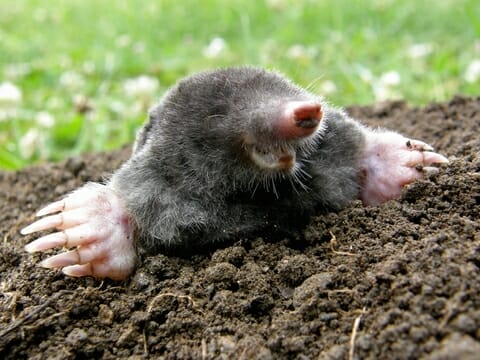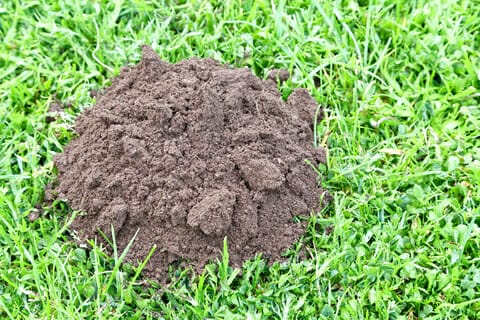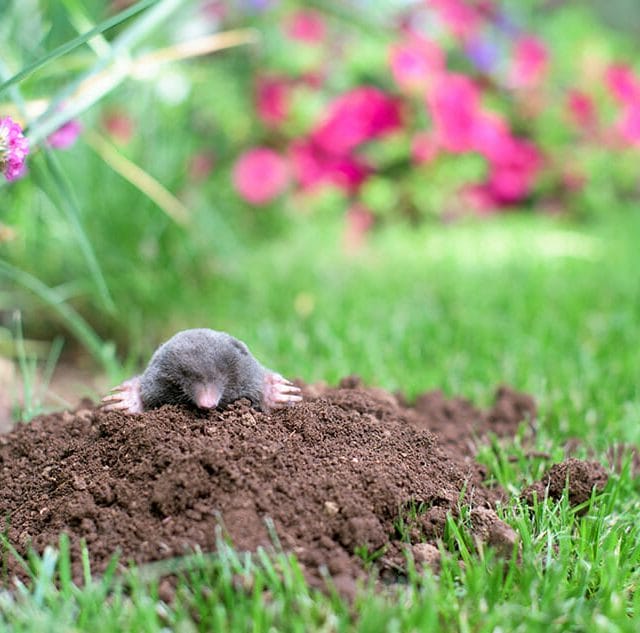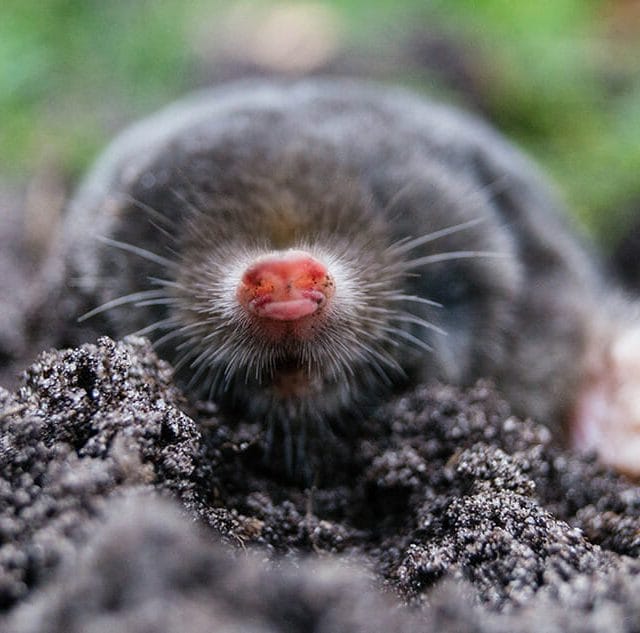Mole Control
BLUE RIDGE WILDLIFE AND FISHERIES MANAGEMENT OFFERS HUMANE AND LASTING MOLE TRAPPING AND CONTROL SERVICES
The eastern mole is a subterranean species shown to adapt easily to suburban environments providing adequate food and water sources. Feeding mainly on earthworms, grubs, and insect larvae, the Eastern Mole creates a complex “mole control” situation for Central Virginia property owners. Although killing their food sources with chemicals could encourage moles to move elsewhere, it could also damage the long-term health of the lawn by removing its natural fertilizing sources. This dilemma often affects which options a client may choose to remedy their mole issue.
If you live in Staunton, Harrisonburg, Waynesboro, Lexington, Covington, Roanoke, Salem, Smith Mountain Lake, Charlottesville, Ruckersville, Lovingston, or Richmond, call us today at 844-WILDPRO for your mole control needs.

Mole Damage
OUR TRAINED STAFF PERFORMS WEEKLY AND BIWEEKLY MOLE TRAPPING AND REMOVAL SERVICES.
Where do moles build tunnels? Can they damage my property? Once the eastern mole has established a feeding area that suits its needs, it creates pockets in which to live, along with a tunnel system. These pockets are typically areas that provide a covered surface, such as sidewalks, retaining walls, driveways, landscaping timbers, and ground-level decking systems. When these pockets (also called chambers) are combined with tunneling, the damage is two-fold: A client could easily have a soft unkempt lawn, in addition to collapsing walls, sidewalks, and decks. Once opened, these damaged areas are at risk for erosion and further damage. It is for these reasons that removing moles promptly is necessary.

Mole Removal
WE HAVE BEEN PROVIDING MOLE-TRAPPING SERVICES SINCE 2011.
What do you recommend to get rid of moles from your property? At Blue Ridge Wildlife & Fisheries Management, we believe that the most straightforward approach is to remove the moles via trapping. In fact, as a chemical-free company, this is the only service we offer for mole removal. Some companies may use chemical treatments or insect removal to try to remove the mole’s food source. They may also recommend a mole deterrent that would need to be reapplied periodically. We believe simply trapping and removing the problem moles is your best option, not only to avoid chemicals but to allow naturally occurring fertilizing species of insects and grubs to remain on your lawn.
Our experienced staff will place anywhere from four to ten traps on your property in high-traffic areas to remove the mole as soon as possible. Once removed, your beautiful lawn (and peace of mind) will return.

Mole Biology
MOLE CONTROL, MOLE REMOVAL, AND MOLE TRAPPING ARE SERVICES WE OFFER ON WEEKLY AND BIWEEKLY TIME FRAMES.
- Average adult mole is .5-4 ounces, but can exceed 5 ounces.
- Moles are mostly grey with large front paws, their bodies are typically large to palm size with no visible eyes.
- Moles reproduce between February and April, with a gestation period of 4-6 weeks; litter size is typically 3-8 young.

Intersted in Mole Trapping Services?
Call 844-WILDPRO or 844-945-3776 today and Blue Ridge Wildlife & Fisheries Management, LLC will service any wildlife control need you may have.
Call our nearest office directly
Harrisonburg, Lexington, Staunton, Waynesboro
109 Shirey Rd
Staunton, VA 24401
(540) 520-0474
Charlottesville, Ruckersville, Scottsville, Free Union
243 Ridge McIntire Rd #1018
Charlottesville, VA 22903
(434) 422-4024
Roanoke, Bedford, Blacksburg, Covington, Smith Mountain Lake, Lynchburg
4210 Electric Rd
Roanoke, VA 24018
(540) 682-7354
Richmond, Henrico, Midlothian (804) 210-3091
"*" indicates required fields

